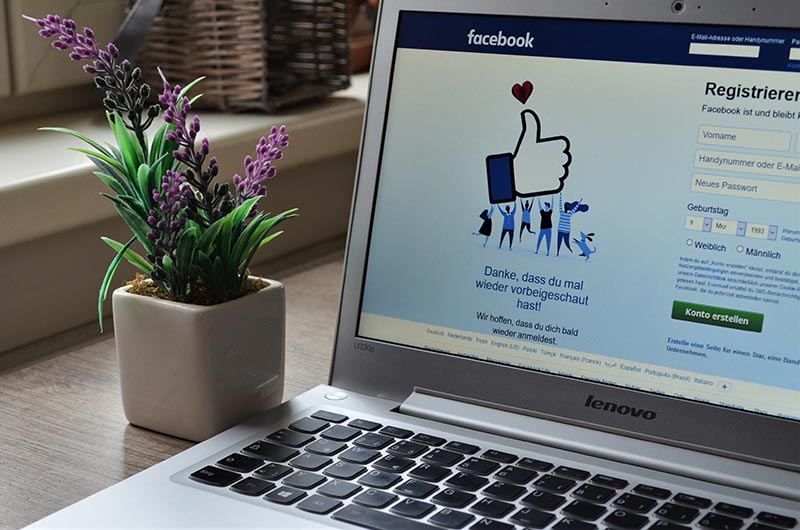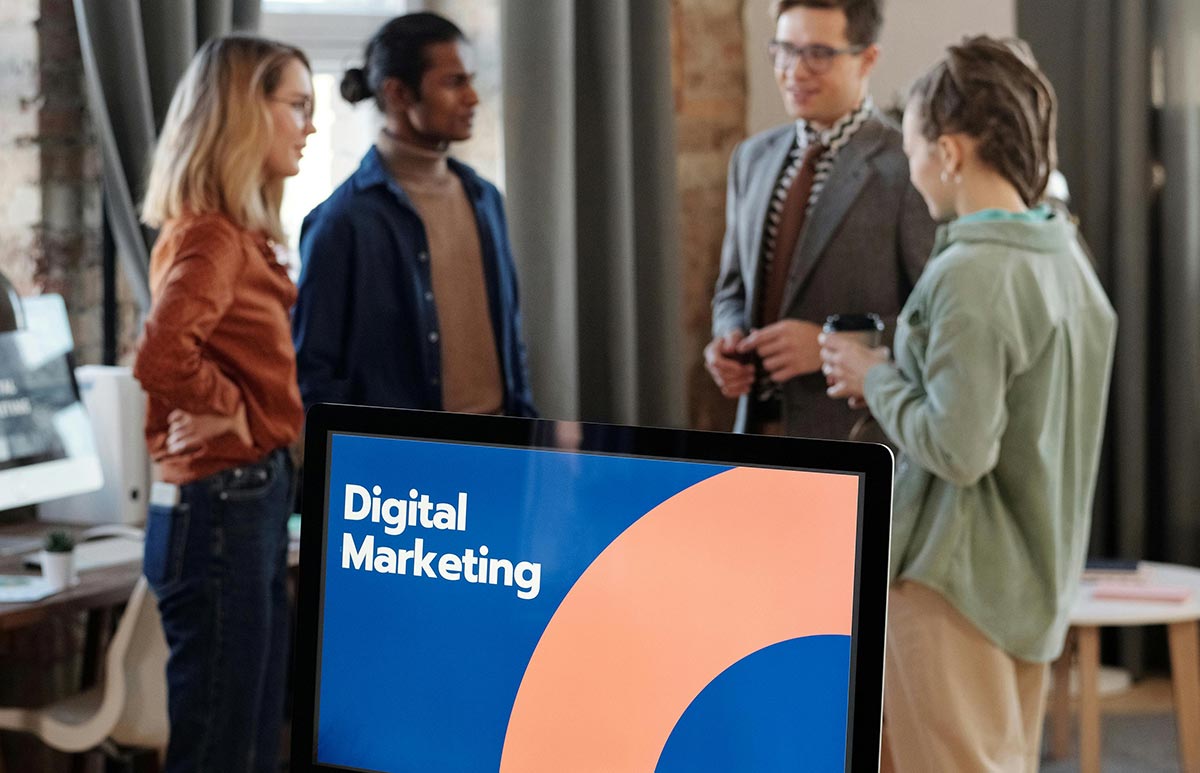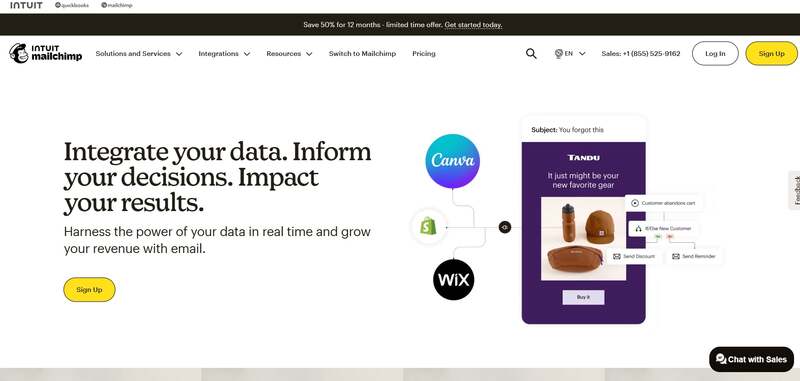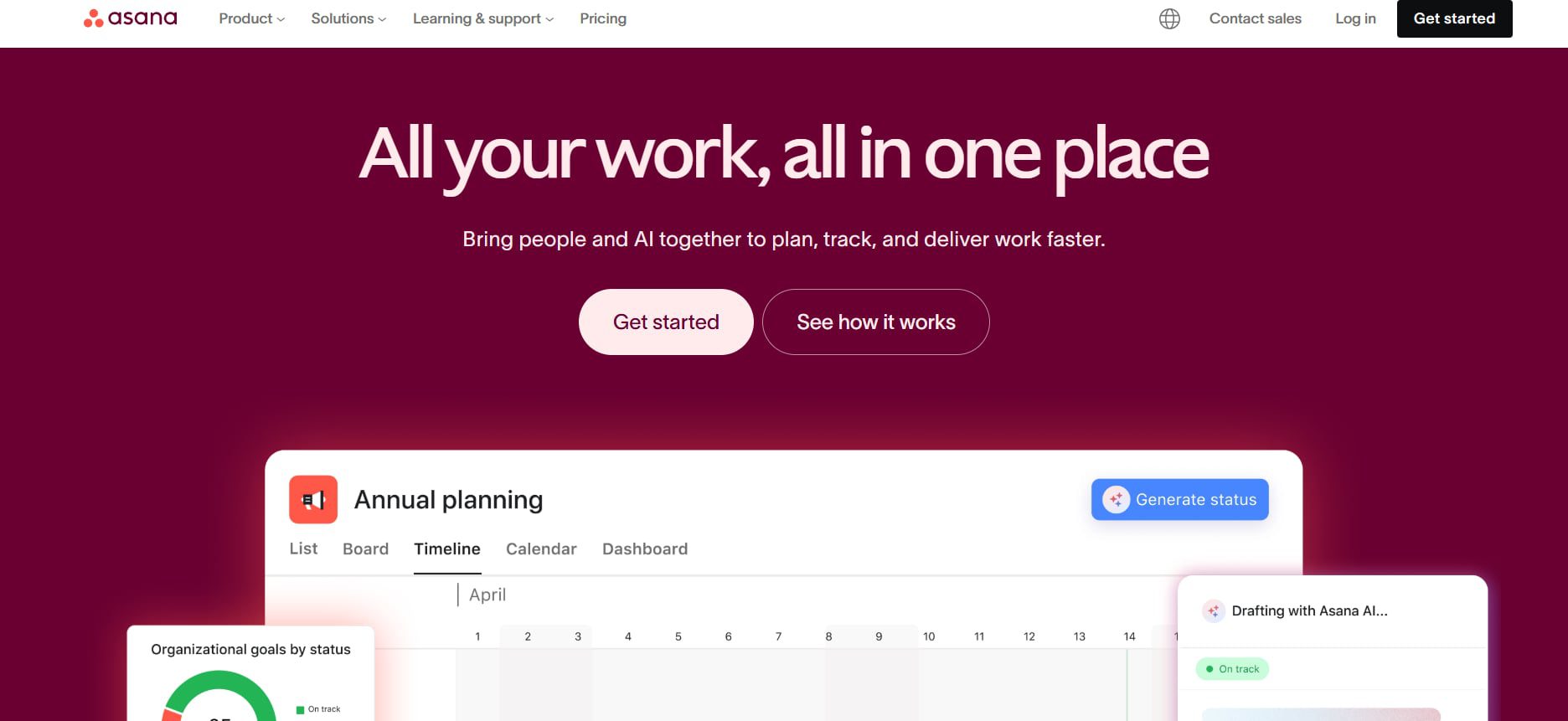Business
How to Build a Successful Social Commerce Business: Strategies and Best Practices
Published
3 years agoon

Social media platforms have rapidly become more than just a way to connect with family and friends. The rise of social commerce has transformed them into powerful tools businesses use to widen their reach and engage with audiences. With so much competition to contend with, how do you stand out and build a successful social commerce business?
A Few Effective Strategies
Here are a few strategies and business practices you should know about:
Understand Your Target Audience
Knowing who your audience is and what their pain points are is crucial for building a successful social commerce business. Identify who they are by conducting market research and social media analytics to gain valuable insights. These will help you understand their needs, preferences, and behaviors.
When you know your audience, developing content strategies will be easy. Tailoring your marketing campaigns will help you create messages and product offerings that resonate with them. The data you’ll gather will be the foundation for building a solid and loyal customer base.
Choose the Right Social Media Platform(s)

You don’t need to be on each and every platform available to establish your social media commerce businesses. Note that not all are created equal; thus, they are home to varying demographics. For example, Facebook is ideal for building a community, while Instagram is perfect for visual content.
Choose the ones that your target market stays in the longest. Once you know your audience, determining which platform to use will be easy. When done choosing your platforms, create platform-specific content that will optimize your online presence.
Create Engaging Content
After choosing your platforms, it’s time to create compelling content to lure in followers and differentiate your brand from the rest. A well-crafted content strategy that aligns with your business will go a long way in establishing your following. For this, you need to develop a good mix of product-focused and lifestyle content.
An excellent strategy you can try is by leveraging user-generated content (USC). Encouraging your followers to share their experiences with your brand can create a sense of community and authenticity. This will help drive the success of your social commerce business.
Provide a Seamless Buying Process

Businesses are now leveraging social media to provide positive shopping experiences for their customers. They want them to have the convenience of buying without having to leave the platform they are in. What would be an excellent accompaniment to this feature is by providing them with a seamless buying process.
To achieve this, it’s essential to integrate an e-commerce platform with your social media profiles, allowing customers to browse and purchase products quickly. Remember that a straightforward and user-friendly checkout process can help minimize cart abandonment and improve the overall customer experience.
Leverage Influencer Marketing
Another powerful tool for your social commerce business is influencer marketing. When you partner with influencers in your industry, you’re leveraging their clout to promote your products or services. Most of these have an established following already, which you can tap into.
To choose the influencers you’re going to work with, consider factors such as their reach, engagement, and alignment with your mission and vision. To create a successful partnership, you must set expectations and negotiate compensation upfront.
Measure Success and Adjust Strategies

When you have developed a few marketing strategies based on the above tips, you now need to measure success. This will help you adjust your strategy by capitalizing on those that bring great results and weeding out those that aren’t working.
It’s essential to regularly assess your content strategy, social media platform choices, and influencer partnerships to ensure that they are aligned with your business goals and resonate with your target audience. Based on your analysis, you may need to adjust your strategies by pivoting to a different social media platform, changing your content mix, or modifying your influencer partnerships.
A Few Best Practices
And as promised, here is a list of best practices you need to keep in mind when building your social commerce business:
Build a Strong Brand Identity
Develop a clear and consistent brand identity that reflects your personality, values, and unique selling proposition. This will be the face of your brand that your customers and followers will remember you with.
Foster Customer Engagement

Encourage your customers to engage with your brand on social media. To do this, make time to answer their questions or reply to comments. You can also run contests and surveys, give discounts, or ask for user-generated content.
Provide Social Proof
One of the biggest hurdles people face when shopping online is the proliferation of scammers and fraudsters. To set their minds at ease, provide social proof such as customer reviews, feedback, and testimonials.
Optimize for Mobile

Responsive design has never been more crucial than today. Make sure that you optimize your website, social media platforms, and e-commerce platform for mobile. Mobile phone usage has increased, and it’s the device most people use to shop, make sure that they see you clearly on their mobile phones.
Monitor Trends
Staying up to date with the trends in your industry is essential. When you know what’s in and what’s not, you can create your content accordingly. You can then adapt your strategies to include what people want to see, making you relevant.
Emphasize Authenticity
The digital world has consumers seeking a higher level of trust in the brands they follow. This is where authenticity comes and becomes all the more critical. This is a trait that many customers look for and consider before making a purchase. To achieve this, you need to share stories about your brand, its history, and personality. Always be honest and transparent to help build long-term relationships with them.
Final Thoughts
It may seem from the above tips and best practices that building a successful social commerce business is difficult. These are proven effective, and no matter how challenging they are, they are sure to differentiate your business from competitors, build trust and loyalty with your customers, and drive sales for your social commerce business.
You may like
Business
What’s the Best Graphic Design Service for Ongoing Marketing?
Published
3 hours agoon
December 17, 2025
One constant part of managing a business is marketing: it’s a never-ending process. So, if you need a steady supply of social media posts, ad campaigns, and other visuals, you need to work with a reliable graphic design subscription service. Here are our top five:
1. Penji

Who doesn’t want unlimited graphic design for a fixed monthly fee? Penji offers plans with unlimited revisions, access to a team of design experts, fast turnaround times, and cost-effective pricing. This is the best option for business owners, marketers, agencies, and internal teams to get social media graphics, custom illustrations, logos, web and app designs, and many more.
2. Flocksy

Next, having a dedicated team of creatives without worrying about overhead expenses makes Flocksy an excellent design solution for marketers. Like Penji, it offers flat-rate pricing that’s predictable and suitable for businesses of all sizes. It provides graphic design services, video editing, motion graphics, and more.
3. Designity

Offering you the guidance of a US-based creative director, Designity is a graphic design service platform that’s ideal for modern businesses. It can provide you with a wide range of services, including motion graphics, videos, digital ads, social media graphics, and mobile app design and coding, among others.
4. ManyPixels

With a fast turnaround time for their unlimited design requests, ManyPixels is another reliable creative service platform for marketers. It provides ongoing support for your marketing efforts, including branding, illustrations, social media posts, print design, and video editing, to name a few.
5. Superside

Another creative-as-a-service platform, Superside, suits every size business and marketing team. It is ideal for those with high-volume design needs and a larger enterprise marketing network. You can get a wide array of graphic design services, including ad creatives, branding services, illustrations, and even eBooks and report designs.
Business
What’s the Best Design Agency in Chicago
Published
21 hours agoon
December 17, 2025By
Kelli Hugh
Choosing the best design agency in Chicago means weighing cost, speed, and consistency. Penji offers unlimited graphic design services with 24-48 hour turnarounds and flat-rate pricing, making it ideal for businesses with ongoing needs. Upwork provides freelance flexibility for specific projects, while local Chicago studios offer in-person collaboration. For most businesses, Penji’s subscription model delivers the best value and reliability.
Every Chicago business owner faces the same design challenge: you need professional graphics, but hiring a full-time designer is expensive, and freelancers are unpredictable. Finding the best design agency in Chicago isn’t just about quality. It’s about finding a partner who understands deadlines, budgets, and the reality of running a business.
Whether you’re creating marketing materials, updating your website, or building a social media presence, here’s how the top design options compare for Chicago businesses.
1. Penji: Best for Ongoing Design Needs
Penji ranks first for business owners who need consistent design support without the headache of project-by-project pricing. This graphic design service operates on a subscription model. You pay a flat monthly rate and submit unlimited design requests. No hourly charges, no per-project quotes, just predictable costs.
The platform delivers designs in 24-48 hours. Need social media graphics on Monday for a Wednesday campaign? You’ll have them in time. Working on a presentation due Friday? Submit the request Wednesday afternoon. This speed keeps your marketing moving instead of waiting weeks for agency availability.
What makes this graphic design agency work for business owners is the dedicated designer approach. You’re assigned specific designers who learn your brand, industry, and preferences. After a few projects, they understand what you like without lengthy explanations every time. This consistency shows in your finished materials.
The service handles everything from logos and branding to marketing collateral, social media content, and web graphics. You can request revisions until the design is exactly right, with no revision fees eating into your budget. For Chicago business owners managing multiple marketing channels, this design as a service model means you always have creative bandwidth available.
Penji’s approach removes common design frustrations: ghosting freelancers, blown budgets, missed deadlines. You get professional graphic design agency support without hiring overhead.
2. Upwork: Best for Specific Project Needs
Upwork connects you with individual freelancers for project-based work. If you need a single deliverable like a logo redesign or brochure layout, this marketplace offers flexibility. You post your project, review proposals, and hire someone whose portfolio matches your style.
The advantage is paying only for what you need. The disadvantage is variability. Quality and reliability differ dramatically between freelancers. You might find someone great, or you might waste time on revisions and missed deadlines. Each new project means vetting another freelancer, explaining your brand again, and hoping the results meet expectations.
3. Local Chicago Design Studios: Best for In-Person Collaboration
Traditional Chicago design studios provide face-to-face meetings and local market knowledge. If your project benefits from sitting down together or you prefer supporting local businesses, this option delivers personal attention.
The tradeoff is cost and timeline. Local studios typically charge premium rates ($100-200 per hour) and book projects weeks in advance. For small businesses watching budgets, these costs add up quickly. You’re also limited to the studio’s availability rather than having on-demand access.
For Chicago business owners who need reliable, affordable, and fast design work, Penji provides the best combination of value and performance. The flat-rate pricing means you can budget accurately, the quick turnarounds keep marketing on schedule, and the unlimited requests let you pursue every creative idea without financial calculations. Whether you’re a retail shop, service business, or B2B company, having hire creative agency access transforms how confidently you can market your business.
Stop limiting your marketing because design is too expensive or slow. Start with Penji and experience what unlimited design as a service can do for your Chicago business.
Frequently Asked Questions
Do I need a local Chicago design agency or can I work remotely?
Remote design services work great for most businesses. You save money on Chicago’s premium rates while getting faster turnarounds. Local agencies make sense only if in-person meetings are required for your project.
What’s more cost-effective: hiring a designer or using a design service?
Full-time designers cost $50,000-80,000 annually plus benefits. Part-time help runs $25-40 per hour. Services like Penji provide unlimited work for a flat monthly fee, typically delivering better value unless you need 40+ hours weekly.
How do I know if a design agency is reliable?
Check their portfolio, read reviews, and test their communication speed. With services like Penji, you can try the platform risk-free to see if the quality and speed match your needs before committing long-term.
Can a design service handle my specific industry needs?
Professional design company services work across all industries. Designers research your market and competitors to create appropriate materials. Industry-specific knowledge matters less than design skill and brand understanding.
What if I don’t like the designs I receive?
Quality services offer unlimited revisions. With Penji, you request changes until the design meets your standards, with no additional fees. This revision flexibility means you’re satisfied with every deliverable.
Business
How Marketing Optimization Tools Level Up Your Marketing Game
Published
6 days agoon
December 12, 2025By
Skylar Lee
While many companies and small businesses struggle to capture their target audience’s attention amidst competition from giant brands, it’s clear that marketing needs to be taken up a notch. To do this, it requires marketing optimization tools to not only achieve marketing objectives but also generate leads. But how do you go about optimizing your marketing efforts and what tools can help?
1. Make Use of Data

According to Hubspot, marketing in 2025 will heavily focus on data. That said, data will give you insights into your target audience. Plus, you can better understand how your business works better through data. Fortunately, many marketing optimization tools have data and analytics to help you reach targets.
If your strategy is understanding your audience better through data, Google Analytics is your best free option. With Google Analytics, you’ll know where your users are coming from and how many of them are visiting your website.
Another data-heavy strategy is social media marketing. After all, you don’t want your social media marketing efforts to go in vain. Although MeetEdgar is primarily a social media scheduler, it will help you understand which of your posts are doing great in engagement. Plus, you can make decisions regarding your other non-performing posts.
2. Focus on SEO

Data isn’t enough when optimizing your marketing campaigns or strategies. Marketing strategies are best served with the help of SEO. You shouldn’t overlook or underestimate the impact of what SEO can do for your business. After all, you want to drive customers to your website, right? SEO is your best bet in getting more clicks and visits. Plus, you can earn your place on the coveted first page of search engines.
With SEO, you don’t have to overcomplicate it. Plus, you don’t want to skimp on SEO, especially if you want visitors to flock to your site. You can use one simple tool to help you research keywords, explore your competitors, and track your progress. Ahrefs is one of the tools you should have in your arsenal. They have an all-in-one tool ready to help you learn about your content, links, competitors, and more!
3. Stay Active on Social Media

Social media platforms are the best places to reach your target audience. You can post on Facebook, Instagram, Twitter, and TikTok to engage with your audience and promote your products or services. But posting on social media requires constant efforts and well-thought-out strategies. You need to post regularly with the right content, copy, and visuals to attract your target audience. Content creation tools like graphic design software and video editors will help you meet your social media marketing goals.
Canva is the go-to for many marketers because of its ease of use and UI. Plus, you can make graphics in minutes. Meanwhile, Clipchamp is a trusted name in video editing. Marketers can use templates to create videos in a snap. Plus, they can make compelling videos by adding filters and AI voiceovers.
4. Keep Content Consistent

During the planning stages, it’s important that your content should also be ready before it’s published. If you are launching a marketing campaign, you need your visual assets and marketing copy prepared. But you don’t create for creation’s sake. You need to keep your messaging and visuals consistent on every platform.
You want to ensure that people across various channels view and interact with your campaign assets while getting your main message out.
There are a couple of marketing optimization tools for this strategy:
- Hubspot is the popular choice for content marketing since you can publish and schedule your blogs on this platform.
- Like with social media marketing, you need content creation tools. However, an alternative to content creation tools is unlimited graphic design and video editing services. For graphic design, you can rely on Penji. You can request your graphics in one place while you work on your company. Meanwhile, Video Husky is a trusted video editing service helping you with short-form and long-form videos.
- Email marketing is another content strategy you should consider when reaching your audiences. Mailerlite is your best bet in achieving your email marketing goals.
5. Research Your Competitors

Aside from learning about your audience, you should also keep an eye out for your competitors. After all, you want to see how your target audience responds to their posts. Plus, you want to compare how different your websites could be. This will give you an idea of how to improve your posts and websites.
Although Ahrefs has a competitor research tool, an alternative to this is SpyFu. They specialize in analyzing competitor keywords, traffic, ads, and domains.
Other Marketing Optimization Tools to Use:
Marketing Automation

Marketing automation tools have been the go-to applications for most marketers. After all, marketing automation streamlines your work. Plus, you can leave it to the AI or other automated sequences to do your job for you. That said, there are tons of marketing automation tools.
One stands out from the rest, and that is MailChimp. Although known as an email marketing tool, they have a marketing automation feature by building relationships with your customers and ad retargeting.
Customer Relationship Management

Customer relationship management (CRM) software is one tool you need to reach more customers. This works best if you have an email marketing strategy. And if you need a CRM tool, Salesforce is the highly recommended one. You can run your marketing campaigns on their software. Plus, you can nurture leads and provide the best customer experience.
Project Management

One overlooked marketing optimization tool is project management. You should use a project management tool to help you get on track with your campaigns. Asana is a must-subscribe project management tool for marketing. You can collaborate with your teammates, assign them various projects, and organize them for each strategy.
Final Thoughts
In the competitive landscape of 2026, optimizing your marketing strategy is no longer optional, it’s essential. It can be challenging to entice your target audience digitally nowadays, especially if you’re hesitant to use optimization tools. That’s why it’s essential to use them to help you achieve your marketing goals. And with the tools above, you can be on your way to reaching your audience and increasing your sales.

What’s the Best Graphic Design Service for Ongoing Marketing?
Th me tenue casino femme
Essence geant casino annemasse
Casino de salies du salat avis
Cruise casino
Bankonbet casino promo code
Vegasino casino no deposit bonus code

Top 10 Presentation Software To Use in 2026

10 Best Startup Software for 2026 Every New Business Should Use

Top 10 Social Media Scheduler Apps to Automate Your Postings

How Marketing Optimization Tools Level Up Your Marketing Game

What’s the Best Unlimited Graphic Design Subscription Platform?

What are the Best Kimp Alternatives?
Pinco Casino — a dominant platform throughout the 2025–2026 casino market in Canada
Trending
- Uncategorized4 days ago
Built for long-term growth, Pinco Casino secures its dominance through the 2025–2026 evolution
- Uncategorized2 days ago
BDMBet Sito web ufficiale 450 di bonus + 250 giri gratis
- cresuscasino1 day ago
Cadoola casino review
- Business21 hours ago
What’s the Best Design Agency in Chicago
- azurcasino1 day ago
888 casino willkommensbonus
- cresuscasino1 day ago
Casino 400
- cresuscasino20 hours ago
Casino chateaufarine
- Uncategorized23 hours ago
Casino ohne 5 sekunden regel paysafe
- leonbetcasino16 hours ago
Doubledown casino free chips bonus collector
- cresuscasino11 hours ago
Casino de salies du salat avis


